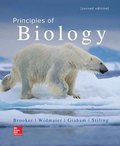
Concept explainers
Introduction:
Cell is the functional and structural unit of a living being. Cells combine to form tissues, and tissues together form organs. And organs combine to form an organ system. There are four types of tissues in animals, “epithelial tissue”, “connective tissue”, “muscle tissue”, and “nervous tissue”.
Answer to Problem 1TY
The correct answer is option (c) nervous.
Explanation of Solution
Explanation for the correct answer:
Option ( c) Nervous tissue. The central nervous system and the peripheral nervous system are formed by the combination of the nervous tissue. It is found in the ‘brain and spinal cord’. It comprises neurons and neuroglia that are responsible for maintaining the control of the body and communicating among its parts.
Explanation for incorrect answer:
Option (a) epithelial tissue or epithelium. It is the sheet of cells that protects the peripheral surfaces of the body, line the gastrointestinal tract and its organs and certain glands. The skin is formed by the layer of epithelial tissues. There are six types of epithelial tissues- Simple squamous epithelia, simple cuboidal epithelia, simple columnar epithelia, stratified squamous epithelia, stratified cuboidal epithelia, stratified columnar epithelia.
Option (b) connective tissue. As the name reads, it acts as a binder between cells and organs of the body. The connective tissues protect and support all the parts of the body. These are of six types of this tissue- ‘loose connective tissue’, ‘dense connective tissue’, bone, cartilage, blood, and lymph.
Option (d) muscle tissue. This tissue responds to stimulus and contractions to provide movement. They are located in ‘hollow visceral organs, digestive organs, and blood vessels’. These are of three types- cardiac tissue, smooth tissue, and skeletal tissue.
Nervous tissue conducts electrical signals from one structure in the body to another structure.
Want to see more full solutions like this?
Chapter 32 Solutions
EBK PRINCIPLES OF BIOLOGY
- What symbolic and cultural behaviors are evident in the archaeological record and associated with Neandertals and anatomically modern humans in Europe beginning around 35,000 yBP (during the Upper Paleolithic)?arrow_forwardDescribe three cranial and postcranial features of Neanderthals skeletons that are likely adaptation to the cold climates of Upper Pleistocene Europe and explain how they are adaptations to a cold climate.arrow_forwardBiology Questionarrow_forward
- ✓ Details Draw a protein that is embedded in a membrane (a transmembrane protein), label the lipid bilayer and the protein. Identify the areas of the lipid bilayer that are hydrophobic and hydrophilic. Draw a membrane with two transporters: a proton pump transporter that uses ATP to generate a proton gradient, and a second transporter that moves glucose by secondary active transport (cartoon-like is ok). It will be important to show protons moving in the correct direction, and that the transporter that is powered by secondary active transport is logically related to the proton pump.arrow_forwarddrawing chemical structure of ATP. please draw in and label whats asked. Thank you.arrow_forwardOutline the negative feedback loop that allows us to maintain a healthy water concentration in our blood. You may use diagram if you wisharrow_forward
- Give examples of fat soluble and non-fat soluble hormonesarrow_forwardJust click view full document and register so you can see the whole document. how do i access this. following from the previous question; https://www.bartleby.com/questions-and-answers/hi-hi-with-this-unit-assessment-psy4406-tp4-report-assessment-material-case-stydu-ms-alecia-moore.-o/5e09906a-5101-4297-a8f7-49449b0bb5a7. on Google this image comes up and i have signed/ payed for the service and unable to access the full document. are you able to copy and past to this response. please see the screenshot from google page. unfortunality its not allowing me attch the image can you please show me the mathmetic calculation/ workout for the reult sectionarrow_forwardIn tabular form, differentiate between reversible and irreversible cell injury.arrow_forward
 Human Physiology: From Cells to Systems (MindTap ...BiologyISBN:9781285866932Author:Lauralee SherwoodPublisher:Cengage Learning
Human Physiology: From Cells to Systems (MindTap ...BiologyISBN:9781285866932Author:Lauralee SherwoodPublisher:Cengage Learning Human Biology (MindTap Course List)BiologyISBN:9781305112100Author:Cecie Starr, Beverly McMillanPublisher:Cengage Learning
Human Biology (MindTap Course List)BiologyISBN:9781305112100Author:Cecie Starr, Beverly McMillanPublisher:Cengage Learning
 Medical Terminology for Health Professions, Spira...Health & NutritionISBN:9781305634350Author:Ann Ehrlich, Carol L. Schroeder, Laura Ehrlich, Katrina A. SchroederPublisher:Cengage Learning
Medical Terminology for Health Professions, Spira...Health & NutritionISBN:9781305634350Author:Ann Ehrlich, Carol L. Schroeder, Laura Ehrlich, Katrina A. SchroederPublisher:Cengage Learning





